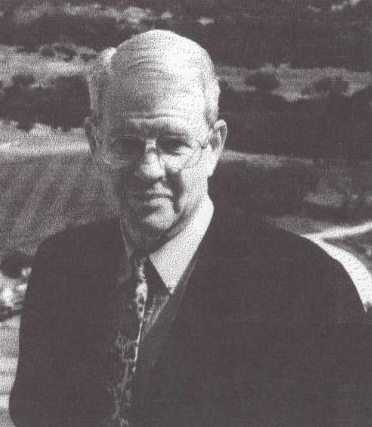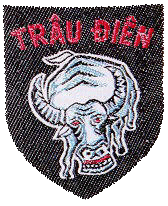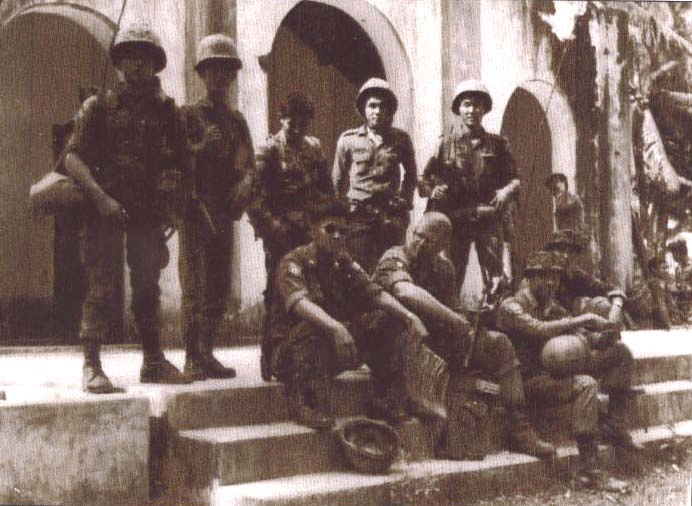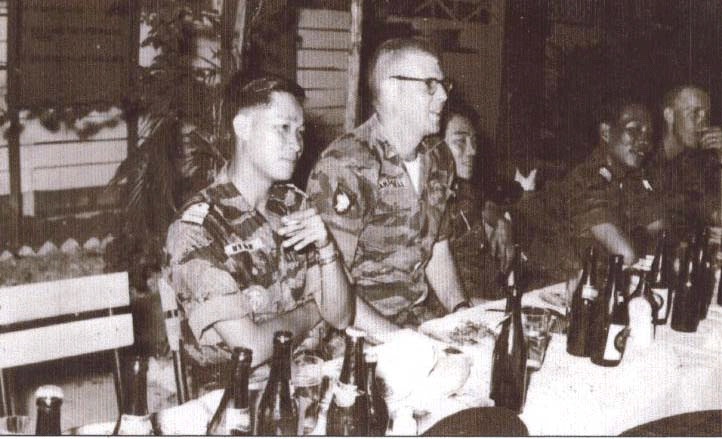Excerpted
from the manuscript entitled " My Father 's War, My war ! Two Wars
of America." Reprinted with permission from Colonel Thomas E.
Campbell USMC ( Retired ).
About the author
Tom
Campbell is a retired Marine Colonel who is an award winning senior
Lecturer in management and leadership at the McCombs School of
Business at the University of Texas at Austin. While on active duty
he was an advisor... a covan... to the Vietnamese Marines for
seventeen months, and commanded two platoons, two companies and two
battalions. He and his wife, Nancy, have now been married thirty -
six years and reside in Austin, Texas and Ruidoso, New Mexico. He is
working on his next book.
Colonel Thomas E. Campbell USMC ( Retired)
The battalion got a new commander and a new name when we got back to our base camp at Thu Duc. General Khang came out and talked to the battalion and decorated a dozen or so of the Marines who had distinguished themselves on the ambush, He said the 2d Battalion was like a “ crazy water buffalo who can’t be stopped when he charges and pays no attention to his wounds” The battalion has worn the patch and name “ Trau Dien “ crazy water buffalo, ever since. Of course, I became “ Big Buff” and Gary Carlson became “ Little Buff”
Dinh, Campbell and the Bn CP group sat down on the porch of Phu My,Binh Dinh church.( 67) Captain, soon to be Major, Ngo Van Dinh was our new commander. Dinh was soft- spoken, courteous with everyone, spoke excellent English and came to be the best Battalion Commander I ever served under to include three outstanding U.S Marine commanders. The first give away that this guy was good was the deference the Company Commanders gave him. He and Minh had been close and had started out as young men in the Vietnamese Marines. Dinh was one of the first Vietnamese Marine officers to graduate from the U.S Marine Basic School in 1958. Major Dinh would fight continuously from 1954 to April, 1975 when South Vietnam finally collapsed under terrible pressure. At the end he was Commander of 258 Marine Brigade fighting in I Corps. His exploits during the Easter Offensive, 1972 are expertly documented by Gerry Turley in his book of that name The trait that separated Dinh from other great commanders such as Minh was his sixth sense and decisiveness. Time and again he would make life and death decisions for the battalion base on his senses, the things none of the rest of us saw or felt and he was uniformly right in every instance. He would later be awarded his nation’s highest decoration for bravery, the Vietnam National Order, Commander Class, equal to our Medal of Honor. The only Marines to receive that high decorations were Dinh, Colonel Bao and Bui The Lan, the Vietnamese Marine Commandant. July was another down month as the battalion was again committed to riot control and antiterrorist operations for a national holiday. In August we went to the Vietnamese Training Center at Van Kiep just north of the beautiful seaside resort of Vung Tau. The training period was something every unit needed but few got. We had over two hundred replacements and it was the quickest way to get them up for operations and sure beat letting them learn in the middle of a firefight. The training center was run very unimaginatively by a phantom Vietnamese commander we never saw and two old U.S Army officers were the advisors. They were obviously senior to Gary Carlson and me but when the fat one started dashing into our billeting long houses and snatching up weapons not locked down or doing uninvited weapons inspections, I asked them, as a lowly subordinate, to knock off the crap. When I told them that was not the way to handle this battalion we had a philosophical parting of the ways. By then it was clear that they were part of the U. S Army clique who hated Marines for no reason except they perceived the Corps a threat to Army missions and tasks. Or maybe because we were all so arrogant towards anything not Marine, which we were.
Victory party for the battalion at our Thu Duc base camp (67) Then, of course, I had to mess up! We were out with the machine gun sections firing on a range and with no warning… when setting of demolitions you always call,” File in the hole “ even in the midst of intense battle because demolitions are indiscriminate killers… a dozen or so one-pound blocks of C-4 went off in sequence in a demolition bed. Both Gary and I had caught enough mortars by then that C-4 explosion bore a striking resemblance to the impact of those really scary 82mm mortars the enemy was so fond of using. The camp had no security procedures so I came up on the range net and announced we were taking mortars out on the range firing line. I’ll just leave the rest to the readers’ imagination. These two Army jerks just went nuts over this one. I had no leg to stand so I just bit the bullet and took it from these non- combat, rear echelon poages. Dinh and I agreed things was pretty shaky from the standpoint of security, as we were allowed no ammunition except on the firing lines. So we called in General Khang and Colonel Nels Anderson, who was now the Senior Marine, and they flew over. Faced with all this brass who had just made the trip to protect their Marines “ Mutt and Jeff” as Gary and I had come to call them, were remarkably humble and all gushing cooperation and praise for the Marines of 2d Battalion. At the end of a very icy meeting. Colonel Anderson turned to me and said “ Tom, do you have any complaints about the cooperation you have been receiving from these two officers ?” glaring at them and pointing. I let the question hang for a few moments. I had told Colonel Anderson the whole drill we’d been through, to include my mistake, so he knew everything and I said “ No sir. I have no problems that we can’t work out with these officers” You could see Mutt and Jeff breathing again. Major Dinh insisted that the battalion would be armed with live ammunition at all times and we finished up our training with no fond farewells and left. We heard a report several months later that a Vietcong battalion surrounded a bleacher full of a hundred and twenty ARVN recruits, all carrying Browning Automatic Riffles, that they were being instructed on and marched off to the hills. The enemy impressed them into service, enriching their armory by a hundred and twenty BARs! Nobody had a round of ammunition for their weapon.
***** WHAT HAPPEN TO THE PEOPLE (VNMC ) IN THE STORY Lieutenant General Le Nguyen Khang, Khang was the Commandant of the Vietnamese Marines from 1960-1972. He and his family managed to escape to the states. He died of cancer several years ago. His charming wife gave a beautiful speech at the 2003 Washington D.C. reunion. Colonel Dinh Van Ngo, In 1969 2d Battalion was sent to Ca Mau peninsula, a terrible place of swamps and enemy. Jack Sheehan was Dinh’s covan then and their headquarters got hit. Dinh took thirty- two pieces of shrapnel one inch or larger. Jack Sheehan got him out and Dinh attributes that to saving his life. Dinh fought to the very last and got himself and his family out just before the fall of Saigon in April, 1975. Gordy Keiser, U.S.Marines, who had been Dinh’s covan in 1972. helped get the family settled in California. Dinh got a job as a welder and he and his wife went to night school and they both got degrees in electronics. They finally settled in San Jose, California and Dinh went to work for a Silicon Valley computer company and became very skilled at that business, one time being called upon to fix President Ronald Reagan’s computer. All of Dinh’s children graduated from the San Jose State University and are into various careers and have their own family. In addition to his numerous personal decorations, including his nation’s highest award for heroism, he also holds an American Bronze Star Medal for heroism in an action in 1968. In 1995 his wife was diagnosed with Alzheimer’s disease and he took early retirement to care for her, as she only responds to him. We regularly correspond and talk on the phone. I still remember him as the best battalion commander I ever had in twenty- nine years, ten months and twenty-two days as a Marine on active duty.
Major Le Hang Minh. Minh started out in the Vietnamese Army in the early 50s. In 1956 he joined the Vietnamese Marines and from 1959-1960 he attended the U.S Marine Corps Basic School at Quantico, Virginia. Promoted to Captain, he attended the U.S Marine Corps Amphibious Warfare School in 1964. He took command of 2d Battalion Vietnamese Marines in November, 1965 and he was killed in action June 29, 1966 on The Street Without Joy North of Hue.
Colonel Nguyen The Luong, 3d Battalion Commander in the story. In the spring of 1965 Time Magazine named Luong the South Vietnamese Fighting man of the Year. Laughing Larry, as the advisors nicknamed him, was a Brigade Commander operating north of Danang in 1975. He was captured and spent a number of years in a reeducation camp. His family managed to get out and come to the States and his children grew up. He was later released and came to America, but his health was broken and he died in April 2002.
Lieutenant Colonel Nguyen Xuan Phuc. When I served with Phuc he was the best of all the 2d Battalion Company Commanders who were an impressive group of junior officers. At that time he had been wounded half a dozen times to include being hit on the ambush. Like Dinh he fought up to the last and as Lieutenant Colonel was the 369 Brigade Commander in March 1975. Dinh says Phuc was missing-in-action in the fighting around Danang close to the end. No one knows what happened to him but he is presumed dead. He was great Marine and charismatic commander like Dinh and Minh.
Colonel Ton That Soan. Soan was like Dinh and Minh in that he was unflappable regardless of how bad it got. He commanded Task Force Bravo, which was a two battalion unit that fought to clean the enemy out of Saigon and Cholon at Tet, 1968. In 1972 he left the Marines and was appointed as Hau Nghia province chief near CuChi. I saw him at a reunion in Houston, 2004, and he told me of thirteen years in a reeducation camp. He looked great.
email bixitrum@yahoo.com
|
|||||||
|
|||||||
|
|||||||




